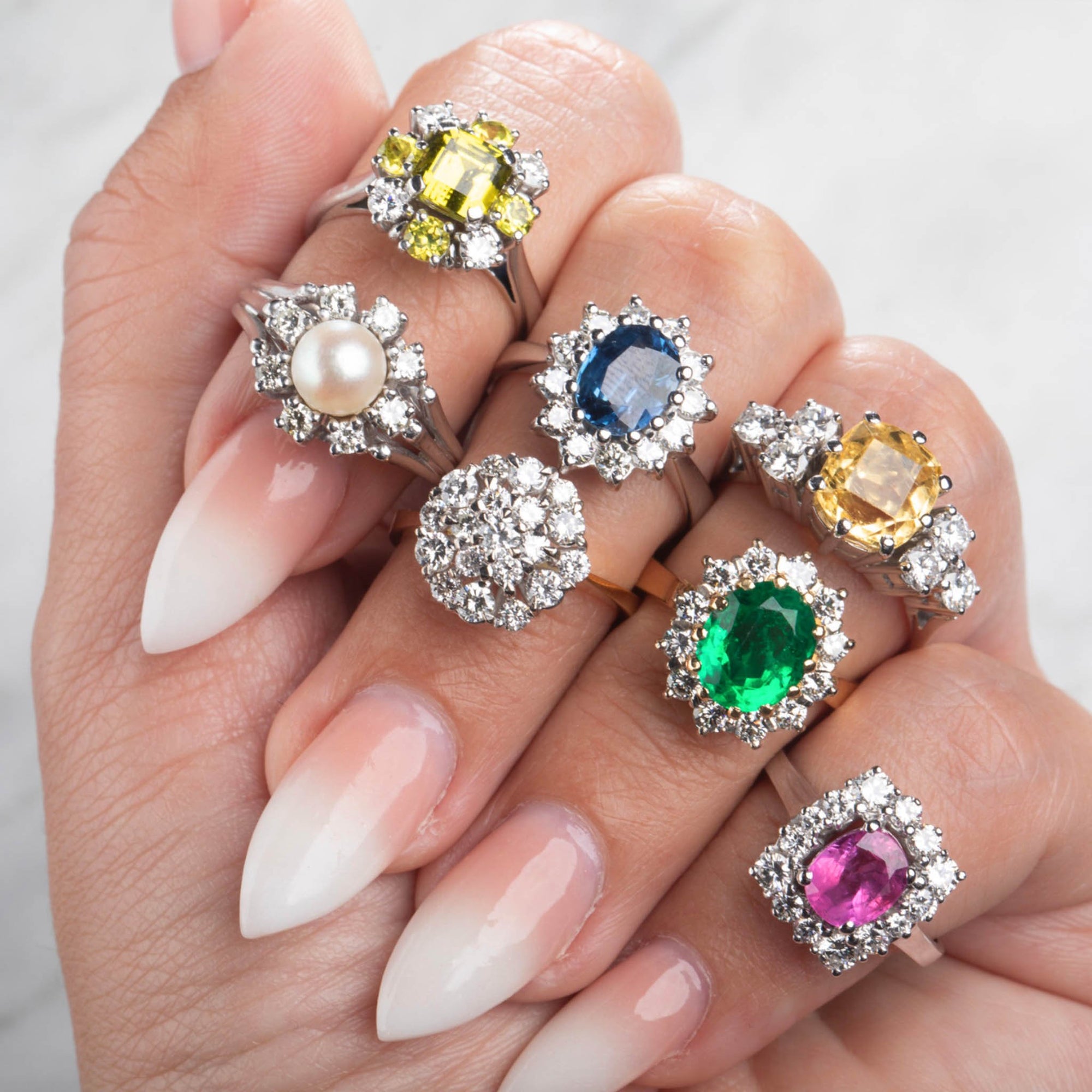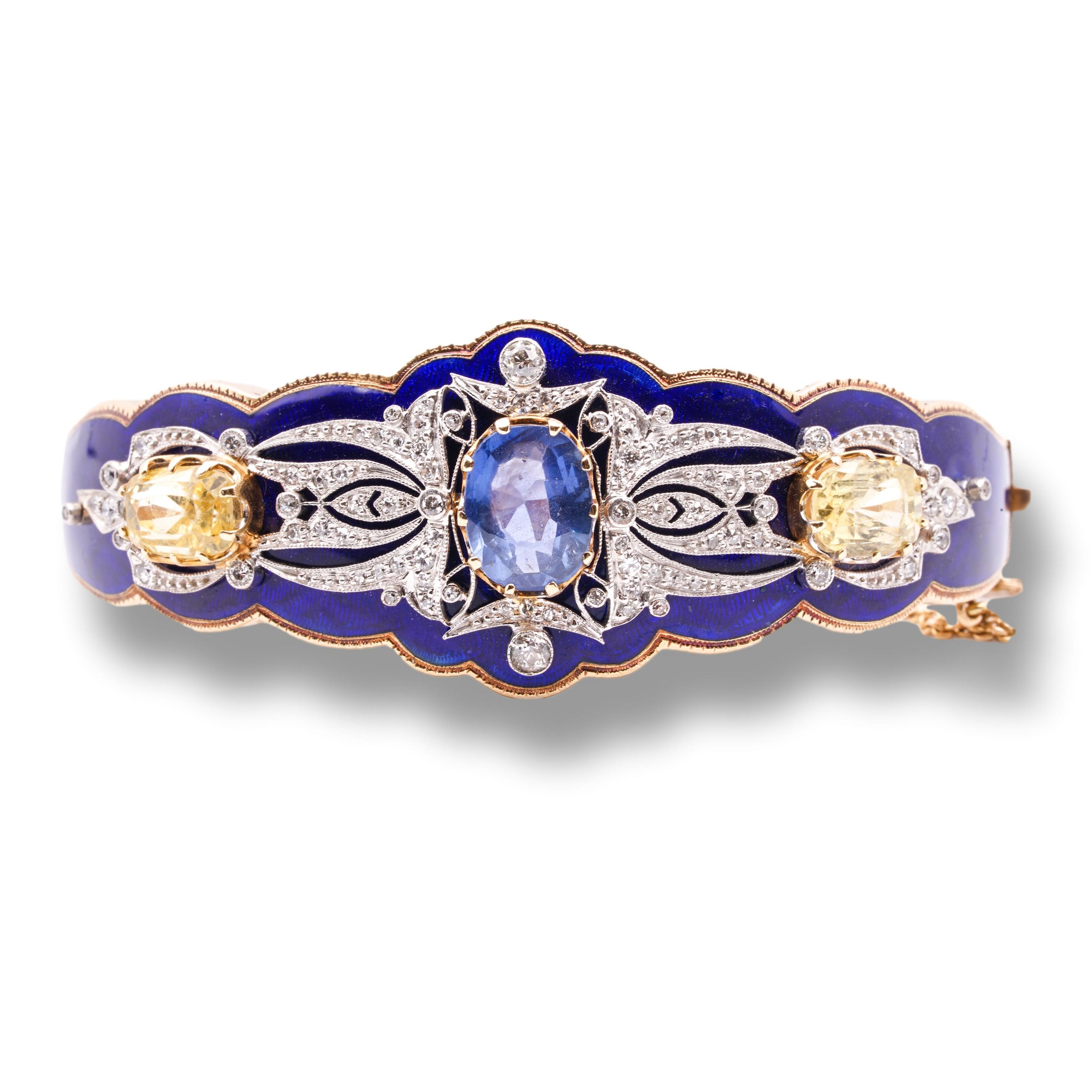Estate Jewelry Austin TX: The Best Places to Shop for Authentic Vintage Jewelry
Estate Jewelry Austin TX: The Best Places to Shop for Authentic Vintage Jewelry
Blog Article
Discover the Rich Background Behind Stunning Estate Precious Jewelry Collections
The expedition of estate jewelry collections provides an one-of-a-kind home window right into history, revealing the elaborate partnership in between craftsmanship and social development. What secrets might these collections still hold?
The Origins of Estate Precious Jewelry
Just how did estate precious jewelry come to personify the abundant background and creativity of bygone eras? The origins of estate jewelry can be traced back to various durations of workmanship, where jewelry was not simply an accessory yet a representation of social worths, technical advancements, and artistic expressions. Each piece tells a tale, commonly linked with the lives of their previous proprietors, encapsulating individual stories along with historic contexts.
The term "estate fashion jewelry" normally describes secondhand items, commonly from considerable periods such as Victorian, Art Nouveau, or Art Deco. These items were developed with precise attention to information, showcasing the skill of craftsmens who made use of products like gold, silver, and priceless gemstones. Unlike modern jewelry, estate pieces often feature distinct layouts that highlight the visual appeals of their time, thus functioning as substantial web links to the past.

Notable Design Periods
Throughout history, a number of notable style eras have dramatically influenced the evolution of estate fashion jewelry, each identified by unique designs, materials, and cultural contexts. The Georgian age (1714-1837) noted the start of detailed styles, typically including nature-inspired concepts and using materials like gold, silver, and gemstones established in elaborate settings. Following this, the Victorian age (1837-1901) presented enchanting styles, with nostalgic jewelry and cutting-edge techniques such as the usage of enamel and cameos.
The Art Nouveau period (1890-1910) celebrated organic types and the elegance of nature, making use of materials like opals and pearls in flowing designs. This was done well by the Art Deco era (1920-1939), which embraced geometric patterns, bold shades, and glamorous materials such as platinum and diamonds, mirroring the modernist spirit of the moment.
The Mid-Century Modern era (1940-1960) showcased streamlined styles and the usage of non-traditional materials, highlighting minimalism and performance. Each of these eras not just shows the creative motions of their time yet also encapsulates the societal worths and technical innovations that shaped fashion jewelry style, making them a remarkable subject for chroniclers and collectors alike.

Famous Estate Jewelry Collections
The rich background of estate precious jewelry is magnificently exemplified by several prominent collections that showcase the artistry and workmanship from different style periods. Among one of the most renowned is the Cartier Collection, which reflects the deluxe and technology of the famous French jewelry expert. Parts from this collection commonly include exquisite gems and elaborate designs, highlighting the brand's dedication to fine workmanship.
An additional significant collection is the Lady of Windsor's precious jewelry collection, which comprises a number of distinct items, consisting of the legendary "Windsor" arm band. This collection not just exemplifies the style of the Art Deco duration however additionally brings a rich story of love and loss, as it belonged to Wallis Simpson, who notoriously wed Edward VIII.
The collection of the late actress Elizabeth Taylor additionally stands out in the world of estate precious jewelry. With countless items made by prominent jewelers like Bulgari and Cartier, her collection personifies prestige and refinement, emphasizing her personal style and fondness for distinct gemstones.
These well-known estate fashion jewelry collections serve as a testimony to the long-lasting allure of great jewelry, supplying understanding right into the imaginative and cultural movements that shaped their development.
The Cultural Relevance
Estate fashion jewelry collections hold extensive social significance, reflecting not only the aesthetic worths of their corresponding eras yet additionally the social and historical contexts in which they were developed. Each item frequently embodies the craftsmanship and imaginative patterns of its time, showcasing the development of style and technology in fashion jewelry production.
Additionally, these collections act as tangible web links to social traditions and rituals. For example, wedding event that site bands and treasure her latest blog breastpins may represent love and familial bonds, while items decorated with particular gemstones can represent regional or cultural identities. The materials used-- whether gold, silver, or jewels-- commonly inform stories of trade, exploration, and the wealth accumulation of cultures.
Furthermore, estate fashion jewelry can operate as historical artefacts, providing insights right into the lives of individuals and the social norms they browsed. The means fashion jewelry was worn and valued can reveal much regarding gender duties, condition, and personal expression within differing social landscapes. Estate fashion jewelry goes beyond mere embellishment, acting as a rich narrative of human experience, virtuosity, and cultural heritage, welcoming modern target markets to engage with the past in a purposeful way.
Caring for Your Estate Pieces
Caring for estate fashion jewelry pieces requires a thoughtful technique to guarantee their longevity and maintain their distinct characteristics. To keep the beauty of these treasures, it is vital to handle them with treatment. Constantly tidy estate fashion jewelry making use of a soft, lint-free cloth after each wear to remove oils and dust. For much deeper cleaning, make use of a mild soap service and a soft brush, making sure to prevent severe chemicals that may damage delicate materials.
Storage space is equally essential; shop pieces independently in a fabric-lined box to stop tangling and scratching. Take into consideration utilizing anti-tarnish pouches or cloths for silver things, as this helps to reduce the tainting procedure. Furthermore, prevent revealing fashion jewelry to too much wetness, severe temperatures, or straight sunshine, which can adversely impact steels and gems.
Regular inspections are vital. Look for loosened rocks, used holds, or harmed settings, and seek specialist fixings when discover this needed. Consulting a jewelry expert experienced in vintage or antique pieces can offer customized care alternatives. By implementing these techniques, collection agencies can protect their estate jewelry's aesthetic and historical value, guaranteeing these pieces remain to be treasured for generations ahead.
Final Thought
Finally, the exploration of estate fashion jewelry collections reveals a tapestry of imaginative expression and social significance, mirroring the values and aesthetic appeals of numerous historic periods. As soon as had them, each item serves as a testimony to extraordinary craftsmanship and the narratives of those that. Recognizing the beginnings, design eras, and significant collections enhances gratitude for these artifacts, stressing their function in protecting cultural heritage and encouraging ongoing stewardship and take care of these impressive treasures.
The exploration of estate jewelry collections supplies an one-of-a-kind home window into history, exposing the detailed partnership in between craftsmanship and cultural development. The origins of estate jewelry can be traced back to numerous periods of workmanship, where precious jewelry was not simply an accessory but a representation of social values, technical improvements, and imaginative expressions.The term "estate precious jewelry" generally refers to previously owned items, typically from significant eras such as Victorian, Art Nouveau, or Art Deco.The abundant background of estate precious jewelry is perfectly exemplified by numerous renowned collections that display the artistry and workmanship from different style periods.In verdict, the expedition of estate jewelry collections exposes a tapestry of imaginative expression and social significance, mirroring the values and aesthetics of various historical periods.
Report this page